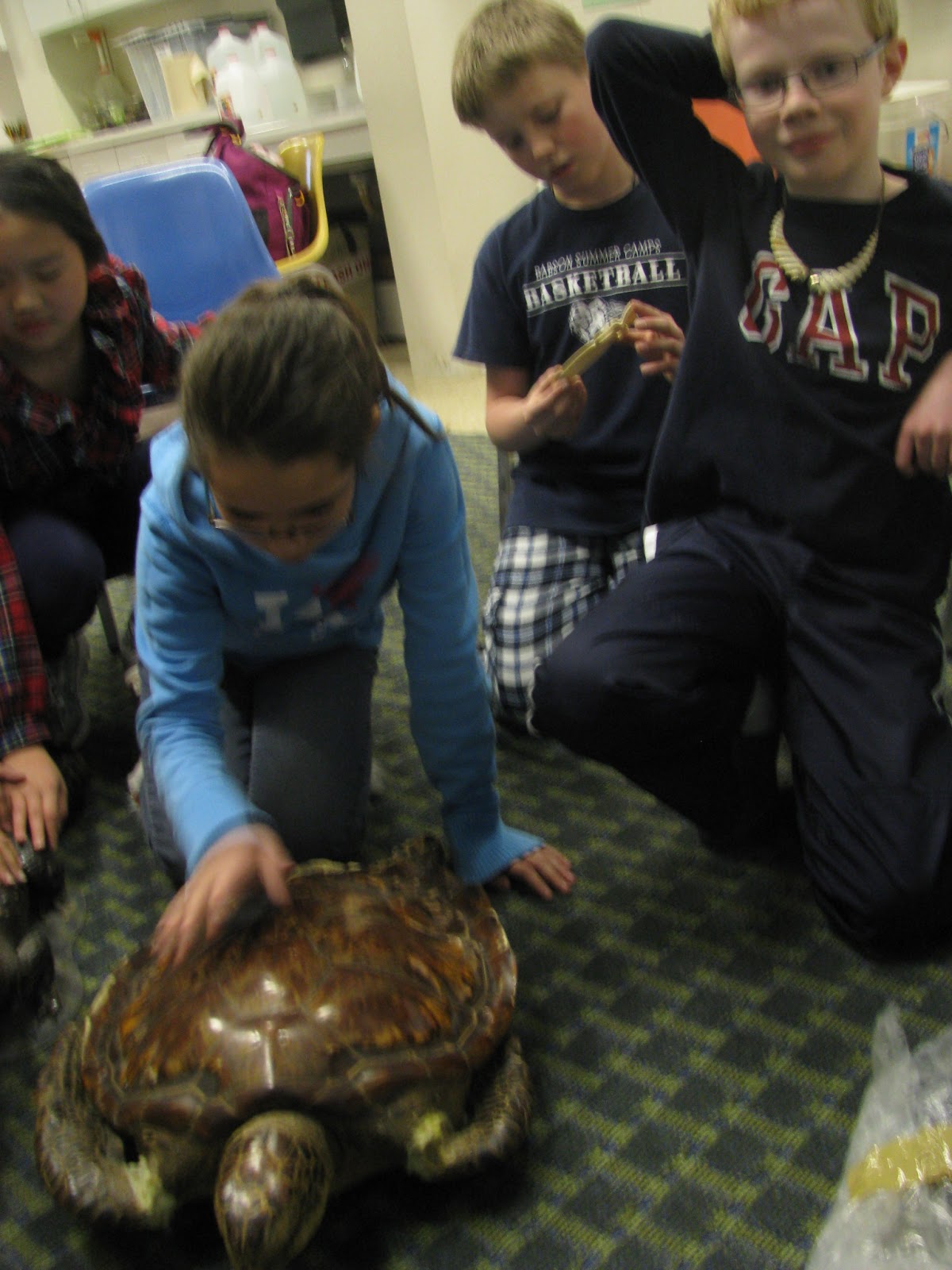Celebrating the 40th Anniversary of the Endangered Species Act
During this class meeting we focused on the Endangered Species Act because this year it is 40 years old! We learned what the act is, what its goals are, how species are "listed," what the different categories of listing are, what causes species to become endangered and we learned of some successes where species have greatly increased their numbers. We also learned about some species that are listed by the Fish and Wildlife Service in our own state of Massachusetts. Although plants are on both the national list and the state list, we focused on animal species. Our room was decorated with posters of endangered species of animals. We also got to examine and touch some parts of endangered animals that have been confiscated from illegal trade by the Mass. Fish and Wildlife Service. These were loaned to the Needham Science Center for educational purposes.
The Endangered Species Act (ESA) was signed into law by President Richard Nixon in 1973. Its purpose is to prevent the extinction of plant and animal species and to increase the populations of vulnerable species. Candidate species must be identified and if they become officially listed, an important part of protecting them is to protect their habitats and travel corridors. The species most vulnerable to extinction are listed as "endangered," while other species on the list are listed as "threatened." We learned that individual people and organizations can play a role by requesting that particular species become candidates for listing. (The US Fish and Wildlife Service and the National Marine Fisheries Service also identify species for possible listing.) There is a long process of review and study for a species to be officially listed. Right now there are more than 2000 species listed. ESA is pretty complicated, but overall it gives much needed protection for these species. We learned that violations of the law can lead to large fines or possibly to imprisonment.
ESA has had some very positive effects for some well-known species. We played a guessing game where we each wore party hats stapled with different pictures of animals that have benefited by the act. We did not know what animal was on our own hats, but could see the other hats on our classmates. We asked each other questions like, "how does my animal move," "what does my animal eat," "what habitat does my animal live in," in order to guess the animal on our own hat. Then we gathered together and learned how each of these animals became endangered and how ESA has helped them recover to larger numbers. Some of them have recovered enough to be removed from the list. The animals on our hats were:
American alligator
Bald eagle
Humpback whale
Gray wolf
Black-footed ferret
Grizzly bear
Atlantic green sea turtle
Then we examined some items confiscated by the Mass Fish and Wildlife Service and loaned to the Needham Science Center:
Elephant tusk
Ivory necklace
Ivory letter opener
Dwarf crocodile (taxidermy mount)
Green sea turtle (taxidermied)
Hawksbill sea turtle (taxidermied)
Tortoiseshell eyeglasses
Jaguar pelt
We were very disappointed to learn that people would want to own these things for decorations and prestige.
We sang "Happy Birthday" to the ESA, blew out candles on our cupcakes and ate them! We agreed to submit a letter about ESA to our local weekly newspaper
Then we played another guessing game. This time, we focused on endangered animals in Massachusetts and this time we each knew our own animal (from a folder with the animal's picture and info inside), but no one else knew which animal we had. Then we took turns being questioned by our classmates until they could get as close as possible to our animal - most were hard to guess exactly! These were the animals in our folders:
Timber rattlesnake
American burying beetle
Shortnose sturgeon
Indiana myotis (bat)
Peregrine falcon
Short-eared owl
Ebony boghaunter (dragonfly)
Bog turtle
Last, we created a large poster to celebrate the ESA. It hangs in the window of the Science Center. We used many photos of endangered animals cut from wildlife calendars.
These are sites where you can learn more about the Endangered Species Act:
US Fish and Wildlife Service: www.fws.gov
National Oceanic and Atmospheric Administration: www.mnfs.noaa.gov/pr/species
Center for Biological Diversity: www.biologicaldiversity.org/campaign/esa



No comments:
Post a Comment